Together again under a single roof. In July 2017, the Hungarian government revealed that it had acquired the remaining seven pieces of the famous Seuso (or Sevso) Treasure. All fourteen known pieces of the hoard are now in Hungary, bringing to an end years of intricate negotiations. In 2014 the first seven items were secured from a private family foundation, along with the copper cauldron in which the hoard was found. Now the remaining pieces have been obtained from a second private trust for a total of 28 million euros, paid not as a purchase price but as compensation for many years of custodianship: the silver is regarded as Hungarian patrimony which, after many twistings and twinings, has duly returned home. For the story of the silver, its discovery and subsequent murky, star-crossed career, see here.
The silver has brought little luck to its owners thus far. One hopes that this may change. At the end of August 2017 the fourteen pieces embark on a national progress through Hungary before returning to Budapest to be placed on public display in the Hungarian National Museum.
The cloak-and-dagger atmosphere that has enveloped the silver, along with sensational talk of a ‘Seuso curse’ have tended to deflect attention away from the beauty and craftsmanship of the articles themselves. This is a pity. The seven pieces belonging to the second Hungarian acquisition are, like the first seven, a mix of restrained engraved and moulded elegance (the ‘Western’ style) and exuberant, bubbling repoussé (the ‘Eastern’ style). They are as follows:
1: The ‘Animal Ewer’, decorated with engraved wild animals and slaves with whips (aimed at forcing animals to engage in bloody combat in the empire’s ampitheatres).
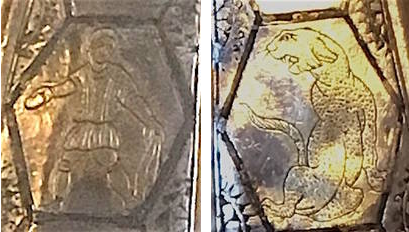
2: The ‘Dionysiac Amphora’, a globular vessel for wine, with handles in the shape of panthers (the god’s totem animal), its body embossed with a frenzied procession of satyrs and maenads and Dionysus himself, astride an enormous goat.
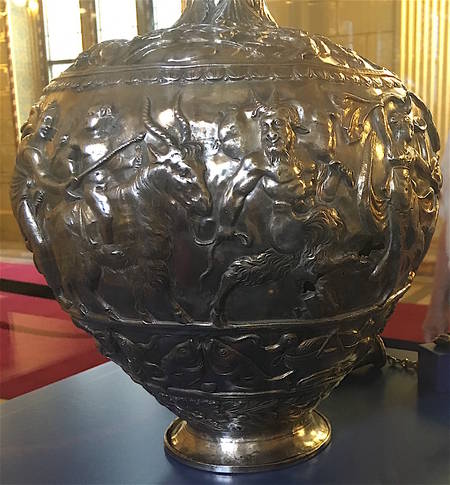
3, 4 and 5: The three silver-gilt vessels decorated with the story of Hippolytus and his stepmother Phaedra. One is a ewer, the other two are situlae, or water buckets. They were probably made as a set. The most charming scene is that of Hippolytus preparing to go hunting. The youth is shown heroically naked except for sandals and a cloak, with his dogs at his side, having received the love letter from his stepmother which he has cast to the ground.
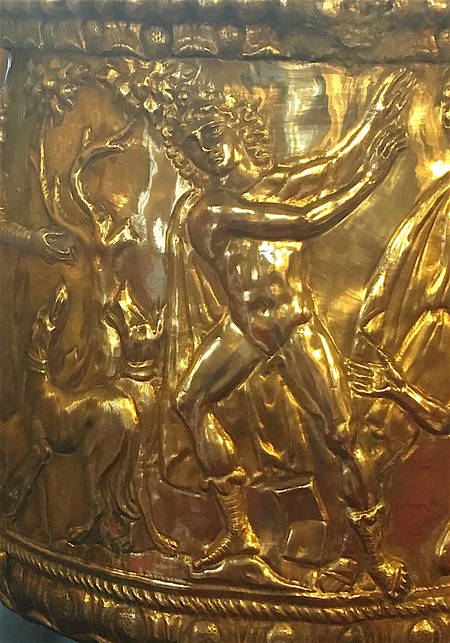
6: The ‘Meleager Plate’, almost 70cm in diameter, with a central relief of the Calydonian Boar Hunt.Central field of the Meleager Plate, showing the victor with the defeated boar slumped by his side.
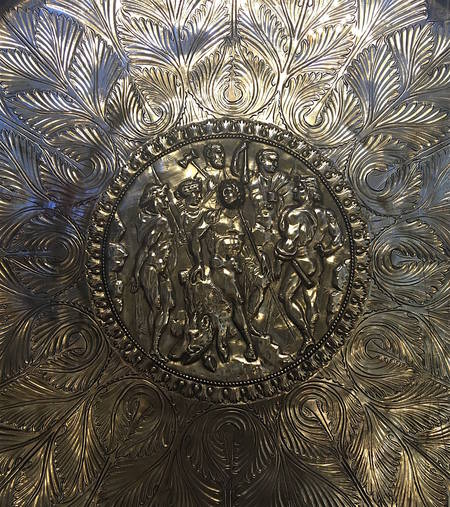
7: The ‘Achilles Plate’, measuring 72cm across, with beautifully rendered reliefs of the life of Achilles. At the bottom is his birth, showing his mother on a bed attended by her waiting women, one of whom is washing the child while another pours water from a ewer not unlike those belonging to the Sevso hoard. At the top is the contest between Poseidon and Athena for hegemony over Athens. Athena is shown receiving the prize on one side while Poseidon slinks away on the other. In the centre is the famous scene of Achilles revealing his true identity. His mother Thetis had clad him in women’s attire to save him from having to take part in the Trojan war. Testosterone will out, however: on hearing the blare of the war trumpet, the hero instinctively reaches for spear and shield.
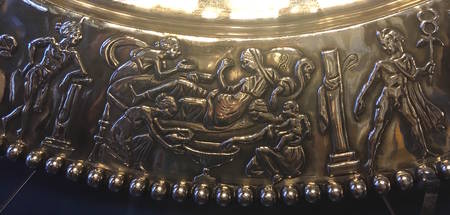
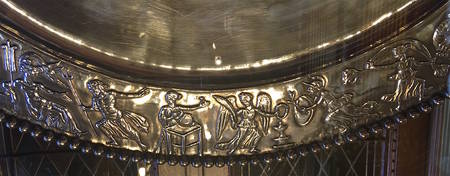
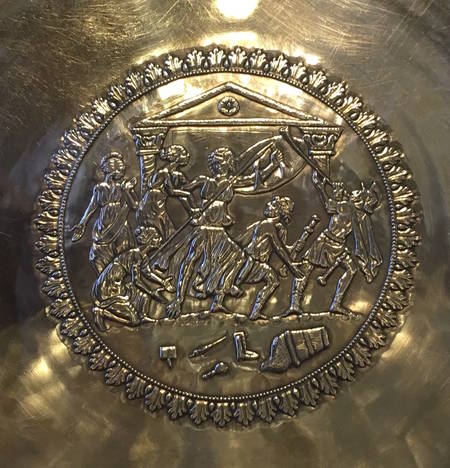
Excavations of the believed findspot of the hoard, between Székesfehérvár and Lake Balaton in western Hungary, are to be conducted. Whether this will reveal anything remains to be seen: if, preparatory to flight, the owners of the silver secreted it in an out-of-the-way place, intending to return for it later, a dig may yield little. On the other hand, the area is rich in Roman remains. Much may remain to be discovered.
Annabel Barber






